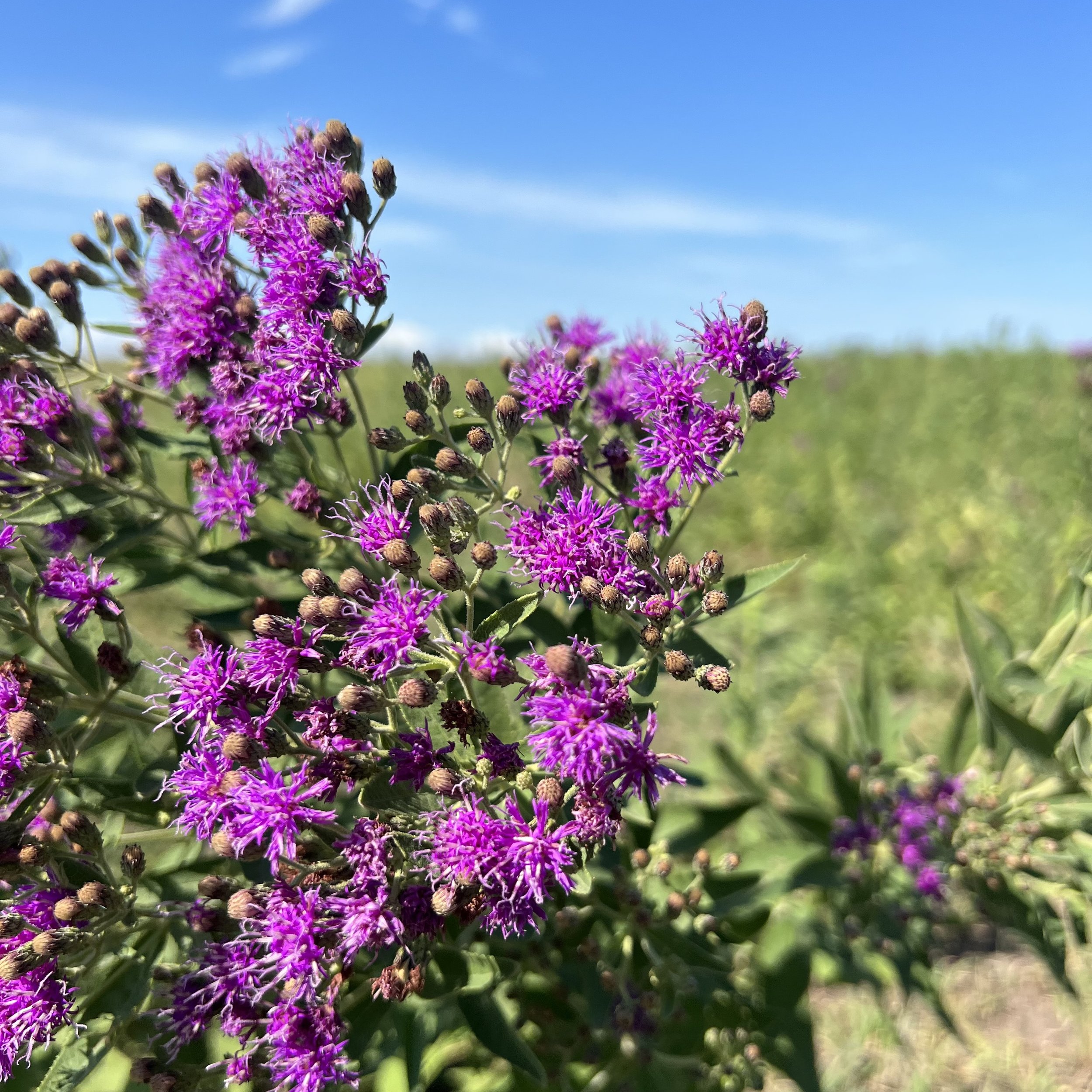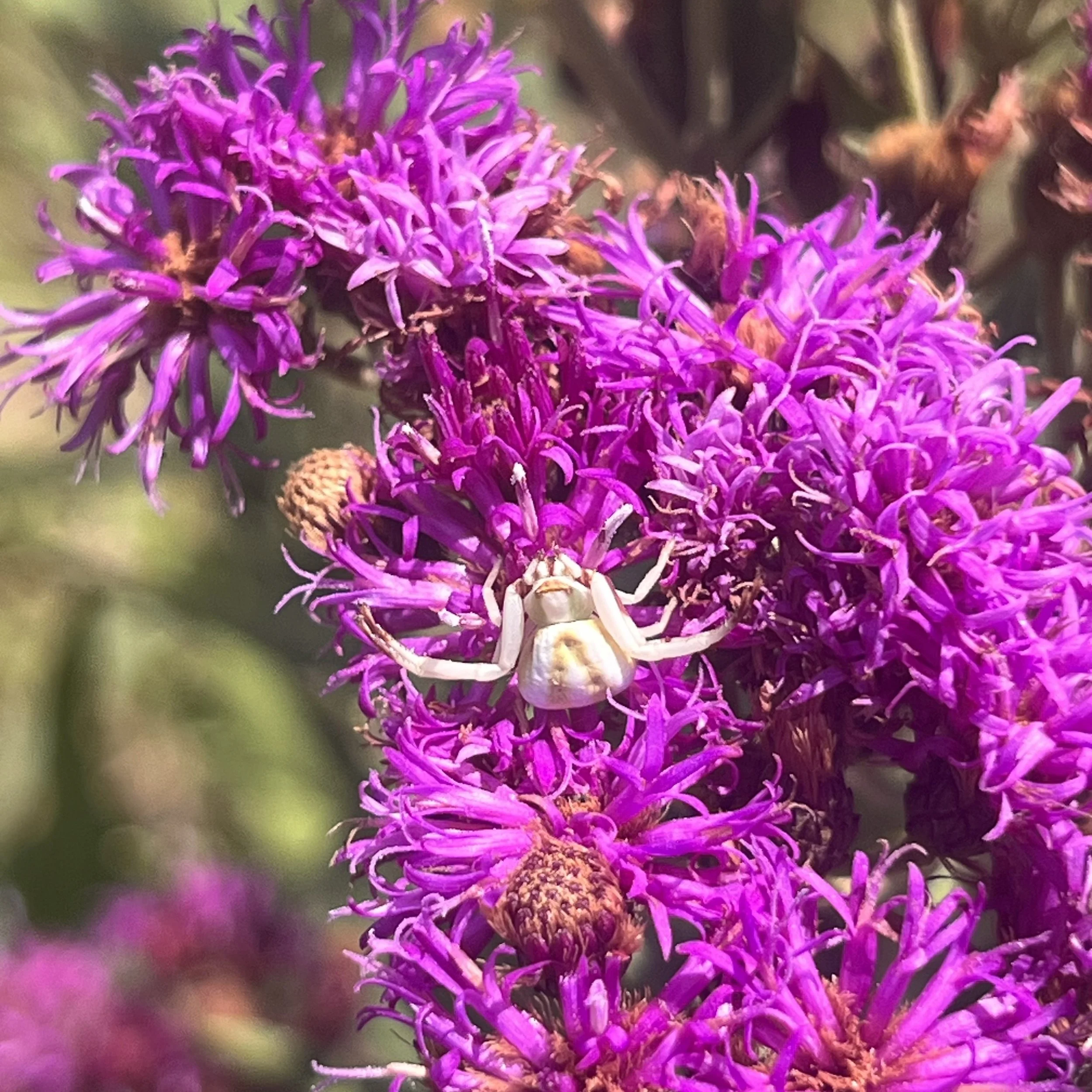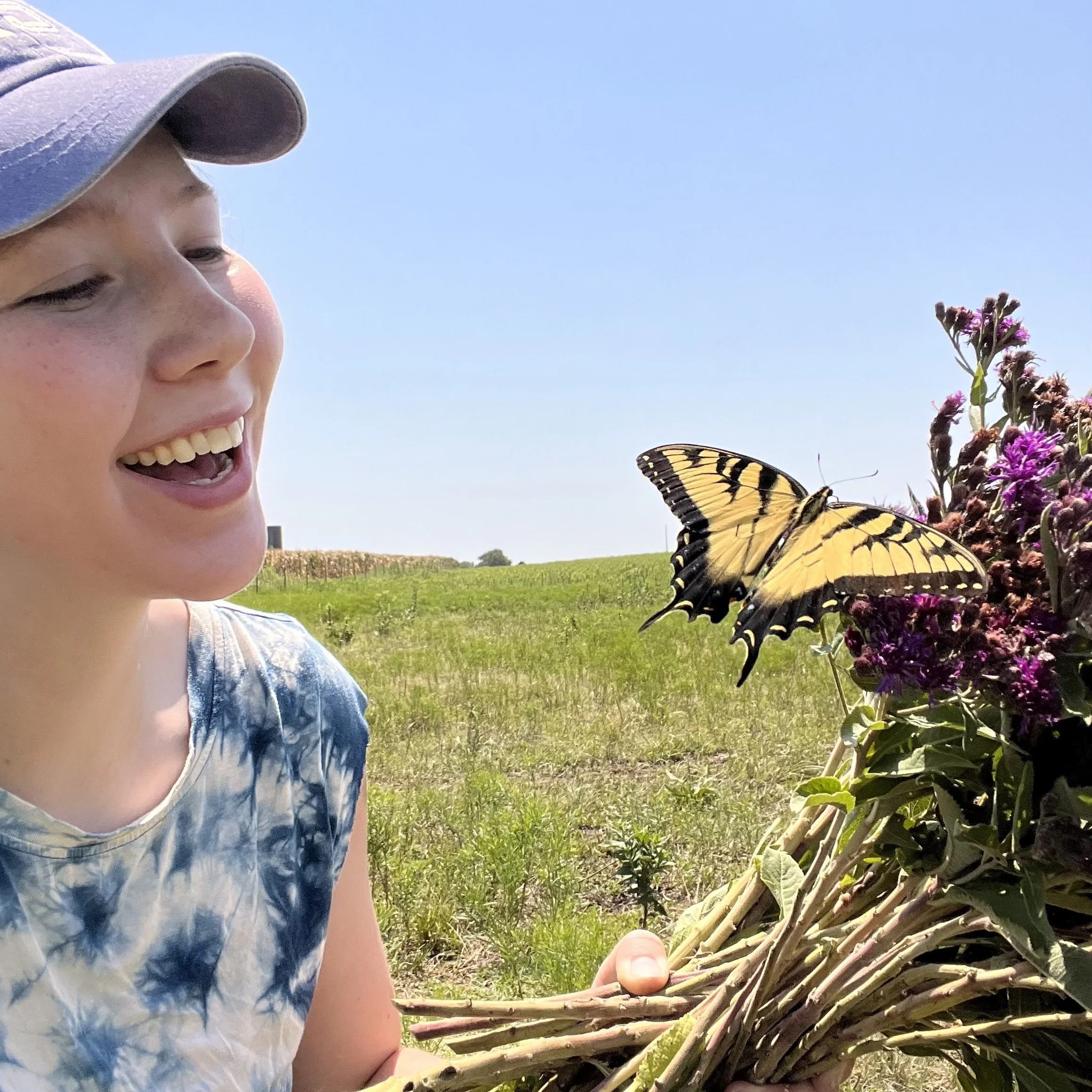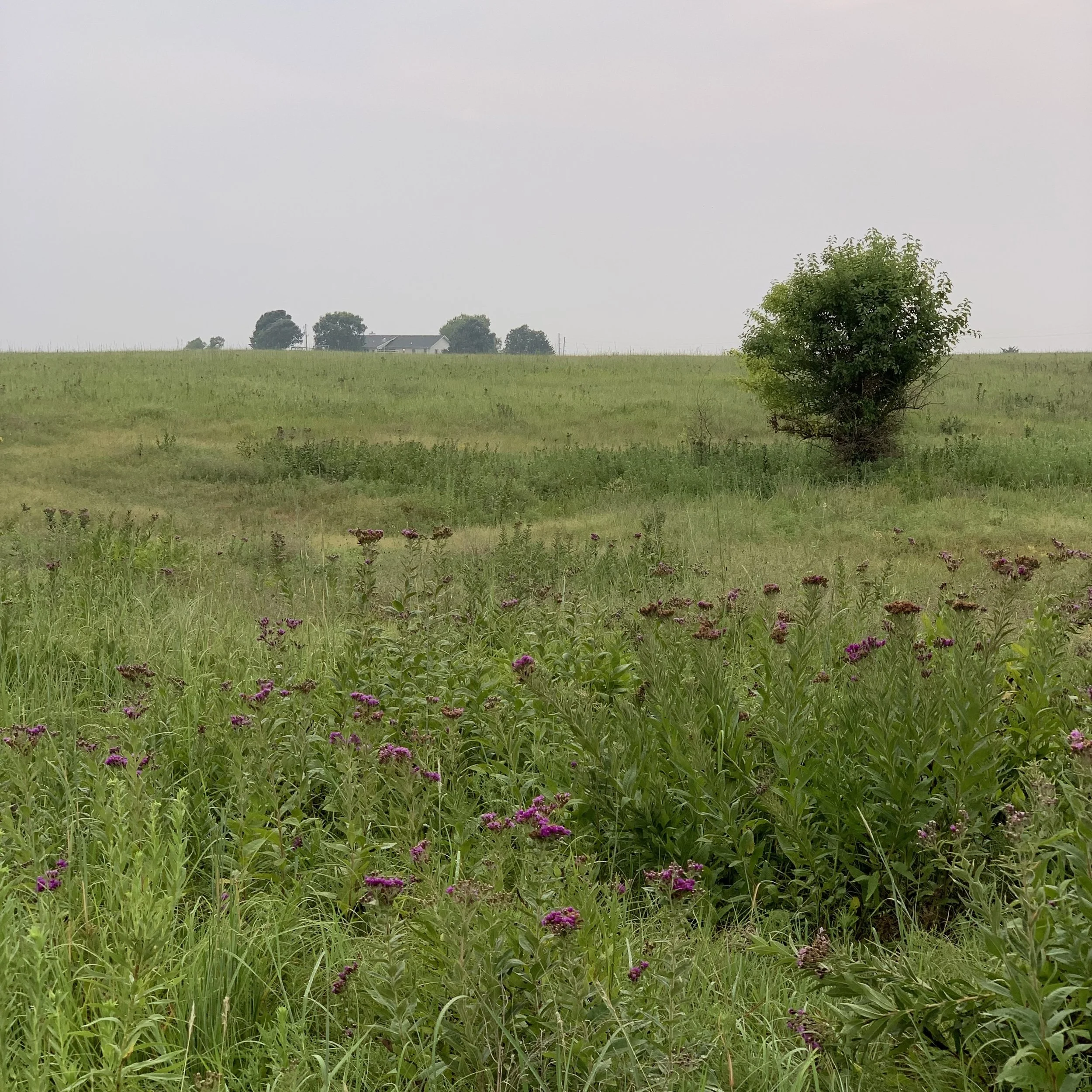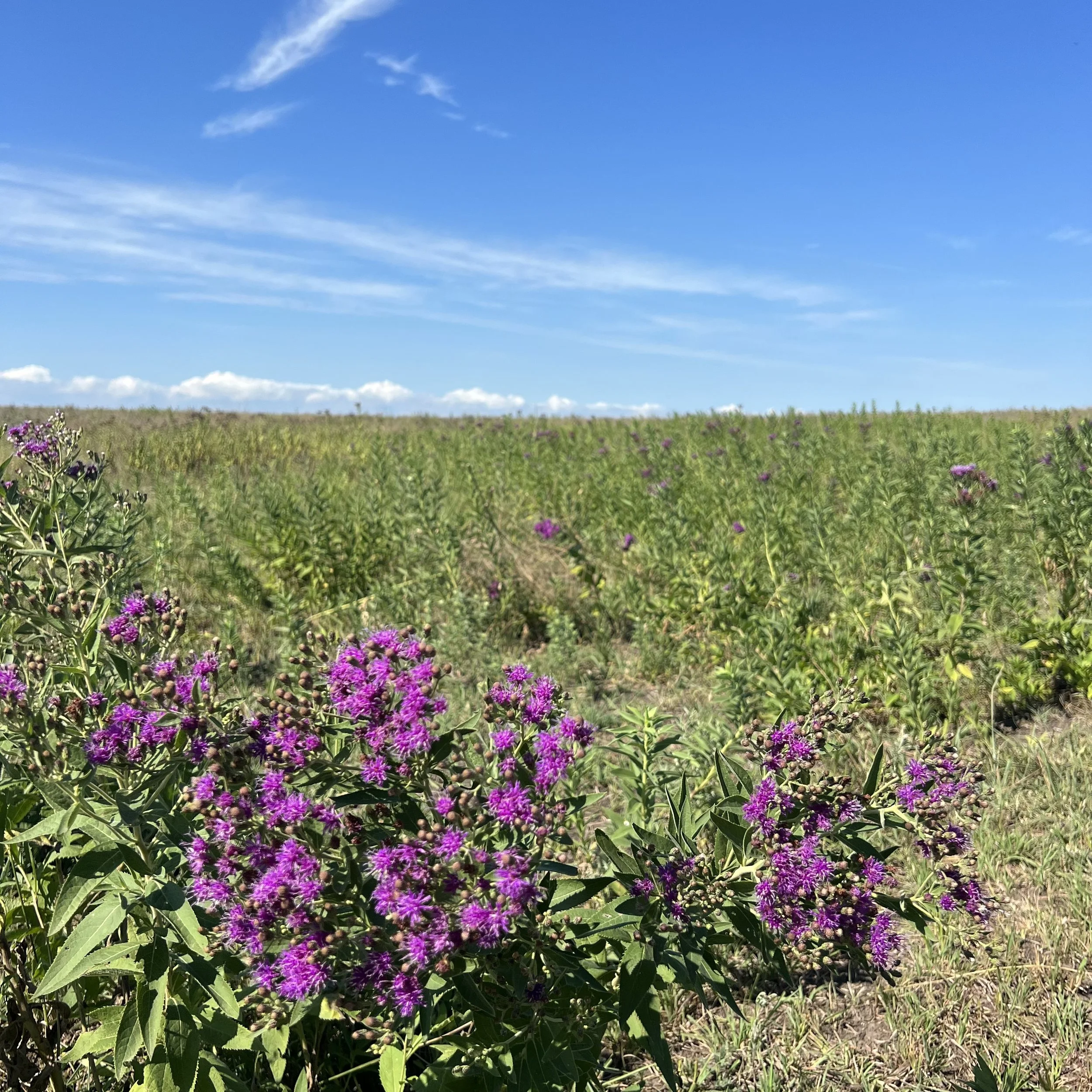Vernonia baldwinii
Ironweed
-
Provide full to part sun (6+hrs/day).
This native was collected from the Flint Hills region of the Kansas prairie. Soil type is clay to loamy clay. This plant should do well in similar soil and can tolerate rocky areas as well.
Native to hardiness zone 6b (-5 to 0 °F).
-
Ironweed is so named because it is an extremely drought tolerant perennial. It can tolerate droughty conditions once established. During the plant’s first 1-2 years, water deeply when the top 2-4 inches of soil is dry.
Vernonia does not need extensive nutrient support. If you know that your soil is poor, consider adding a small amount of compost at planting, working it evenly into the surrounding top 6-8” of soil.
-
As a perennial, ironweed is best established after soil has warmed in May/June or 4-6 weeks before our first frost in the fall.
-
Late Summer (July-October)
-
Ironweed is perennial and grows from a tough rootstock. The plant forms tall stems from a basal clump of leaves.
It may be necessary to divide clumps every 3-5 years.
-
Ironweed is one tough cookie! In nature, you can find it in overgrazed prairie and areas where other species find it difficult to thrive. It blooms in late summer when other bloomers are scarce and pollinators need it most.
There is no medicinal value that I have found in my resources.

